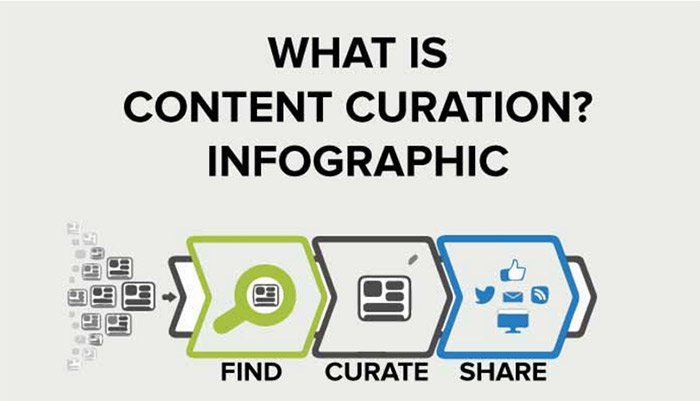Saas Product Marketing stands out as a strategic powerhouse. Whether you're a seasoned marketer or a SaaS-based company, understanding the ins and outs of marketing SaaS products is essential for success.
Even though SaaS product marketing has gained rapid popularity. Many people are still unaware of this, and the common questions that arise are: What is Saas Product Marketing? How does SaaS Product Marketing differ from Traditional Product Marketing? And what is the significance of SaaS product marketing?
This blog will reveal the importance of SaaS product marketing, exploring how marketing for Saas products differs from traditional approaches. We will discuss its significance and equip you with actionable insights on creating a robust marketing strategy for saas products. Join us as we break down the concept of marketing for SaaS products.
What is Saas Product Marketing?
SaaS product marketing is the strategic process of launching and promoting your SaaS product. It serves as the engine responsible for driving your business to success. This specialized approach involves customizing messages and positioning your product, focusing on its unique features and benefits in the market.
It differs from traditional product marketing; product marketing for SaaS is especially designed to overcome the obstacles of selling digital products and ensuring users' adoption and continuing to use your product. It is indispensable for creating demand, expanding your user base, and maximizing the reach of your product in your saas marketing startup.
How does SaaS Product Marketing differ from Traditional Product Marketing?
Traditional product marketing primarily focuses on acquiring marketing qualified leads (MQLs) for the sales team, where the responsibility is handed over to the sales team for further action.
On the other hand, SaaS product marketing takes a more product-centric approach and is centered on the continuous growth of the product through user onboarding at every stage of the user journey.
To get a clear view, let's examine them individually:
Traditional product marketing:
- Operates at the intersection of product, marketing, and sales
- Creates and develops messaging and positioning for products and services
- Creating demand and securing MQLs for the sales team
SaaS product marketing:
- Utilizing the product as the key driver of acquisition, offering free trials and freemium models in product-led what is saas marketing
- Constructs messaging and positioning for products and services
- It fosters product growth by driving user onboarding throughout their journey.
Understanding the Significance of SaaS Product Marketing
1. User-Centric Growth:
Unlike traditional marketing approaches that focus on generating leads for the sales team, SaaS product marketing takes a user-centric approach to growth. It's not just about acquiring customers; it's about onboarding users seamlessly at every stage of their journey. By leveraging the product itself as a primary acquisition driver, SaaS product marketing ensures a continuous and engaging user experience.
2. Strategic Messaging and Positioning:
Crafting the right message for your SaaS product is about highlighting features and strategic messaging and positioning. SaaS product marketing involves articulating the unique value proposition of your digital solution, addressing the specific pain points it solves, and positioning it effectively in the market. According to Insivia, customers retain 95% of information conveyed through video content, as opposed to only 10% when the same message is presented in written text. To effectively communicate the benefits of your product and its solutions, consider creating videos that guide viewers through its features and demonstrate how it can address their needs. This strategic communication is crucial for standing out in a crowded SaaS landscape.
3. Product-Led Growth:
SaaS marketing funnel uses strategies where the product is not just a solution; it's a growth engine. SaaS product marketing often employs free trials and freemium models to let the product speak for itself. By putting the product in the hands of users, this approach fosters a self-sustaining cycle of adoption, engagement, and expansion.
4. Integration of Sales, Marketing, and Product:
SaaS product marketing operates at the intersection of sales, marketing, and product development. It goes beyond the traditional handover of leads to the sales team; it actively contributes to the growth journey. This integration ensures a holistic approach, aligning the product's capabilities with market needs and optimizing the user experience for sustained success.
5. Driving Demand and Expansion:
At its core, product marketing Saas is indispensable for driving demand, fostering product adoption, and enabling expansion. Product marketing sets the stage for acquiring users, retaining them, and encouraging continuous expansion by effectively communicating the value of your SaaS offering and facilitating a smooth onboarding process.
How do you create a SaaS Product Marketing Plan?
SaaS marketing strategies involve two key phases: Pre-launch and Post-launch.
Pre-launch SaaS Product Marketing Strategy
Crafting effective product marketing strategies for SaaS (Software as a Service) products involves a comprehensive approach tailored to the unique characteristics of the digital landscape. Marketing for SaaS products requires a strategic focus on pre and post-launch phases to ensure successful introduction and sustained growth in the competitive market.
Define Your Ideal Customer Profile (ICP):
Product marketing Saas involves understanding and defining your Ideal Customer Profile (ICP). This detailed persona gives information about the ideal users who will benefit most from your SaaS solution, resulting in revenue and generating referrals, insights, and testimonials for business growth using saas marketing playbook.
Understand the competitive market:
Successful marketing for SaaS products demands a thorough analysis of the competitive landscape. Identifying macro and micro trends impacting your launch and differentiating your product from competitors is key.
Strategic Narrative, Positioning, and Message-Market Fit:
Defining your positioning in the market and achieving message-market fit ensures that your SaaS product resonates with the target audience. Regularly revisiting and adapting your narrative keeps it relevant in the SaaS market.
Setting Targets and Measurement Metrics:
Implementing a robust measurement framework is critical in marketing SaaS products. Set clear business goals using the Objectives and Key Results (OKR) framework and define key performance indicators (KPIs) specific to SaaS metrics. Monitoring metrics such as Customer Acquisition Cost (CAC), Monthly and Annual Recurring Revenue (MRR and ARR), Activation Rate, and Churn Rate provides insights for data-driven optimization.
Tactics and Execution:
Aligning all the elements of your B2B SaaS Marketing strategy cohesively is necessary to achieve the desired targets. Quality data is the foundation, and a marketing plan that allows testing and optimization is a must.
Focus on one tactic at a time and scale it as your business grows. Initiating the strategy with organic traffic acquisition and incorporating paid traffic for qualified leads, trials, and demo requests through content marketing can be a practical approach. Implementing an SEO-first content strategy increases the visibility on search engines.
Post-launch SaaS Product Marketing Strategy
After launching your product, a successful post-launch marketing strategy for saas products, heavily relies on leveraging marketing automation.
But first, it is crucial to understand how the different stages in the user journey align with your product and how the messaging should be optimized at each stage.
Primary Onboarding Process:
At the Initial onboarding stage, your aim should be to guide potential users to understand and experience the value of your product. The goal is to lead them to that "oh, that’s cool" and finally reaching the activation stage.
Secondary Onboarding Process:
The secondary onboarding process introduces your existing customer base to additional product features and relevant content that provide extra value. These extra features offer a deeper understanding of the varied functionalities of your product, showcasing benefits beyond the initial activation stage and enhancing audience engagement.
Tertiary Onboarding Process:
This stage concentrates on retention, cultivating loyal customers, and fostering account expansion. At this juncture in the user journey, your current customers clearly understand your product's value and are adept at using most of its features. In this stage, the focus is on retaining users and identifying opportunities for account expansion by presenting upselling options for premium plans and providing additional access to premium features or services.
Implementing a positive user experience and delivering continuous support can build long-term customer loyalty and facilitate sustained growth for your SaaS product.
SaaS Product Marketing Automation
Marketing automation lets you utilize software and AI technologies tailored to maintain repetitive tasks for product marketers. Considering the extensive amount of tasks associated with post-launch SaaS marketing strategies, the volume of repetitive tasks tends to multiply as your company grows. Improved SaaS automation, accelerated deployment processes, and increased agility are contributing to the expansion of the SaaS market.
From managing email campaigns to maintaining consistent interactions, marketing automation is a catalyst, enabling you to provide an enhanced user experience. Simultaneously, it saves precious time and resources, allowing you to concentrate on more advanced strategic initiatives.
Consider one more scenario where you must email every time someone signs up. With successful pre-launch goals, daily signups can be substantial. From a cost perspective, it is impractical not to utilize marketing automation.
Automating these tasks reduces the ratio of human error and ensures a consistently personalized experience for all users.
Wrapping up
Understanding the essence of SaaS product marketing and leveraging the strategic toolkit is the key to success. We have discussed the essentials, from decoding SaaS Product Marketing to emphasizing its important role in user-centric growth. As you are equipped with insights, you're ready to confidently explore the dynamic world of SaaS marketing.
If you seek personalized guidance, don't hesitate to contact Saffron Edge. Our team comprises experts ready to assist you in tailoring a strategy that aligns perfectly with your unique requirements.
Connect with us today; your path to strategic growth starts here.
Get The SaaS Marketing Toolkit
Related Blogs
We explore and publish the latest & most underrated content before it becomes a trend.
7 min read
What is a X Marketing Agency? Here are the Top 5 Agencies for you
By Vibhu Satpaul
Subscribe to Saffron Edge Newsletter!

Get The SaaS Marketing Toolkit










